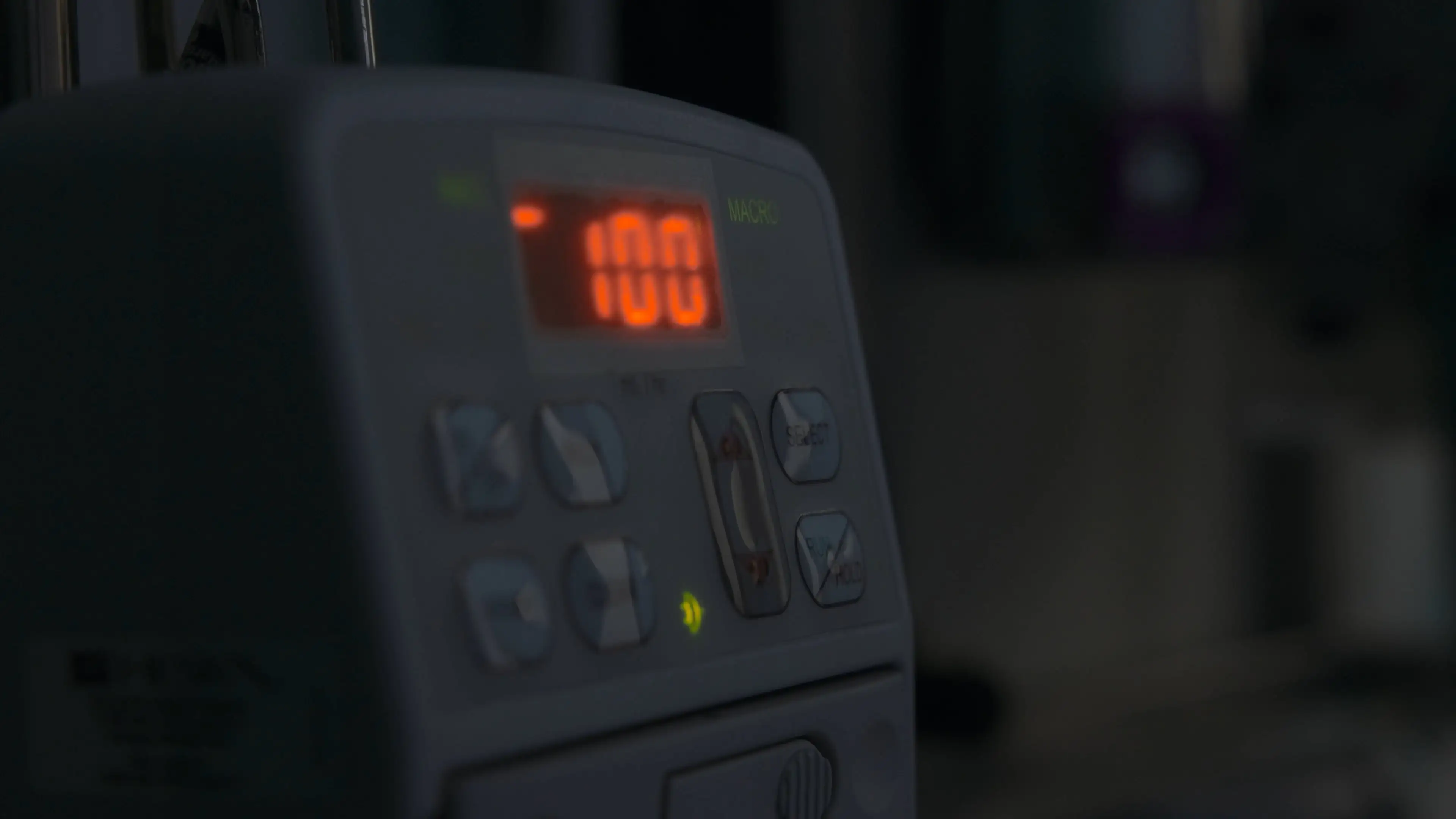Philadelphia Defective Medical Devices Lawyer
Understanding Defective Medical Devices
Defective medical devices can have devastating consequences for patients who rely on them for their health and well-being. These devices, which include implants, prosthetics, and diagnostic tools, can fail due to design flaws, manufacturing defects, or inadequate instructions. At Fulginiti Law, we are dedicated to helping victims of defective medical devices in Philadelphia seek justice and obtain the compensation they deserve.
Causes of Defective Medical Devices
Defective medical devices can result from various factors, often related to negligence or oversight in the design, manufacturing, or marketing processes. These defects can have severe consequences for patients, leading to injuries, complications, and even fatalities. Understanding the common causes and types of defective medical devices is crucial for identifying potential risks and seeking appropriate legal recourse.
Flawed Design
A fundamental flaw in the device’s design can make it inherently dangerous or ineffective. This could include structural weaknesses, improper material selection, or a lack of essential safety features.
Examples: A pacemaker with a design that leads to electrical malfunctions, or a hip implant with a shape that causes wear and tear in the joint.
Lack of Testing
Insufficient testing during the design phase can lead to undetected issues that only become apparent once the device is in use. Rigorous testing protocols are essential to ensure that devices perform safely and effectively under various conditions.
Examples: A new diagnostic tool that has not undergone thorough clinical trials might produce inaccurate results, leading to misdiagnosis.
Manufacturing Defects
Poor Quality Control
Errors during the manufacturing process, such as the use of substandard materials or assembly mistakes, can compromise the safety and functionality of the device. Quality control protocols are crucial to detect and correct these issues before the devices reach the market.
Examples: Surgical instruments with defects like sharp edges or loose components that can break off during use.
Contamination
Devices that are improperly sterilized or contaminated during production can cause infections or other health issues. Sterile manufacturing environments and strict hygiene protocols are necessary to prevent contamination.
Examples: Contaminated catheters that lead to severe infections in patients.
Inadequate Instructions or Warnings
Insufficient Instructions
Lack of clear and comprehensive instructions for use can lead to misuse or improper installation of the device. Detailed user manuals and training for healthcare providers are essential to ensure correct usage.
Examples: A complex medical device like an insulin pump that comes with inadequate operating instructions, leading to incorrect dosages.
Failure to Warn
Not providing adequate warnings about potential risks and side effects can leave patients and healthcare providers unaware of potential dangers. Comprehensive warning labels and patient education materials are critical.
Examples: A drug-eluting stent without proper warnings about possible allergic reactions to the drug coating.
Types of Defective Medical Devices
Defective medical devices span a wide range of products used in various medical treatments and procedures. Common types include:
Hip and Knee Replacements
Defects can cause severe pain, mobility issues, and the need for additional surgeries. Issues may arise from wear debris, improper fitting, or material degradation.
Examples: Metal-on-metal hip implants that release metal particles into the bloodstream, causing metallosis.
Breast Implants
Defects can lead to ruptures, leaks, and serious health complications, including capsular contracture (hardening around the implant) and silicone migration.
Examples: Silicone breast implants prone to rupture, leading to silicone leakage into surrounding tissues.
Diagnostic Tools
MRI Machines
Malfunctions can result in incorrect diagnoses or injuries during scans. Calibration errors, software glitches, or mechanical failures can lead to inaccurate imaging.
Examples: An MRI machine that overheats and causes burns to the patient.
Blood Glucose Monitors
Inaccurate readings can lead to improper management of conditions like diabetes, causing serious health risks such as hypo- or hyperglycemia.
Examples: Glucose monitors that fail to calibrate correctly, giving false low readings and leading to overdoses of insulin.
Cardiac Devices
Pacemakers
Malfunctions can lead to irregular heartbeats or complete failure of the device, putting patients at risk of cardiac arrest or other heart complications.
Examples: A pacemaker battery that depletes prematurely, requiring emergency replacement surgery.
Defibrillators
Defects can prevent the device from delivering life-saving shocks during cardiac events, leading to potential fatalities.
Examples: An implantable defibrillator that fails to detect a life-threatening arrhythmia and does not deliver the necessary shock.
Surgical Instruments
Scalpels and Forceps
Defects can cause injuries during surgical procedures, such as unintended cuts or damage to tissues.
Examples: Scalpels with dull blades that require excessive force to cut, leading to surgical errors.
Endoscopes
Malfunctions can lead to incomplete procedures or internal injuries, such as perforations or infections due to contamination.
Examples: Endoscopes with faulty optics that obscure the surgeon’s view, increasing the risk of procedural errors.
Common Injuries from Defective Medical Devices
Defective medical devices can cause a wide range of injuries, from minor to life-threatening. These injuries can have long-lasting and devastating impacts on patients’ lives. Understanding the potential injuries can help in recognizing symptoms early and seeking appropriate medical and legal assistance.
Infections
Surgical Site Infections
Contaminated devices can introduce harmful bacteria during surgical procedures. This contamination can occur during the manufacturing process, packaging, or handling before the surgery.
Complications
Surgical site infections can lead to severe complications such as abscess formation, delayed healing, and the need for additional surgeries to remove infected tissue.
Symptoms
Symptoms may include redness, swelling, pain at the surgical site, fever, and drainage of pus.
Systemic Infections
Spread of Infections
Infections originating from contaminated devices can spread throughout the body, leading to systemic infections. This can happen if the infection enters the bloodstream, causing a condition known as sepsis.
Sepsis
Sepsis is a life-threatening condition that can lead to septic shock, organ failure, and death if not treated promptly. Symptoms include high fever, rapid heartbeat, rapid breathing, confusion, and severe pain or discomfort.
Long-term Effects
Survivors of severe systemic infections may experience long-term health issues, including organ damage and chronic fatigue.
Organ Damage
Cause
Devices such as faulty implants or surgical tools can cause internal bleeding by damaging blood vessels or tissues during or after the procedure.
Consequences
Internal bleeding can lead to significant blood loss, requiring emergency medical intervention. It can also cause damage to organs and tissues, leading to long-term health problems.
Symptoms
Symptoms may include severe pain, swelling, dizziness, low blood pressure, and signs of shock.
Organ Perforation
Cause
Misuse or malfunction of medical devices can cause perforations in organs. For example, a malfunctioning endoscope can puncture the intestinal wall, or a defective catheter can perforate the bladder.
Emergency Surgery
Organ perforations are medical emergencies that require immediate surgery to repair the damage and prevent complications such as peritonitis, an infection of the abdominal cavity.
Symptoms
Symptoms of organ perforation may include severe abdominal pain, fever, nausea, vomiting, and signs of infection.
Chronic Pain
Defective Implants
Defective implants or prosthetics can cause chronic pain and discomfort. This pain can result from improper alignment, material degradation, or inflammation caused by the device.
Impact on Quality of Life
Persistent pain can significantly impact a patient’s quality of life, affecting their ability to perform daily activities, work, and enjoy life.
Management
Chronic pain management may require medications, physical therapy, or additional surgeries to correct the defective device.
Nerve Damage
Cause
Faulty devices can cause nerve damage by applying pressure to nerves, cutting or nicking nerves during implantation, or causing inflammation that affects nerve function.
Long-term Effects
Nerve damage can lead to long-term pain, numbness, tingling, and mobility issues. In severe cases, it can result in permanent disability.
Symptoms
Symptoms of nerve damage include sharp or burning pain, muscle weakness, loss of sensation, and difficulty with coordination or balance.
Device Failure
Cause
Defective devices can wear out or break down prematurely due to poor design, substandard materials, or manufacturing defects.
Additional Surgeries
Premature failure of medical devices often necessitates additional surgeries to replace or repair the defective device. This can increase the risk of complications and prolong recovery time.
Impact on Health
Premature wear and tear can lead to worsening of the medical condition the device was intended to treat, causing further health deterioration.
Malfunction
Failure to Perform
Devices that fail to perform their intended function can lead to serious health complications or death. For example, a malfunctioning pacemaker can fail to regulate heartbeats, or a faulty insulin pump can deliver incorrect dosages.
Health Complications
Malfunctioning devices can exacerbate existing health conditions, cause new medical issues, or result in emergency situations requiring immediate medical intervention.
Symptoms
Symptoms of device malfunction can vary widely depending on the type of device and its intended use but may include sudden pain, failure of the device to operate, and signs of medical distress.
Legal Representation for Defective Medical Device Victims
At Fulginiti Law, we understand the profound impact that injuries from defective medical devices can have on your life. Our dedicated team of product liability attorneys is committed to providing compassionate and comprehensive legal support to victims in Philadelphia.
How Fulginiti Law Can Help
Thorough Investigation
Our legal team conducts a meticulous investigation into the circumstances of your defective medical device case. We gather all necessary evidence, including medical records, device maintenance logs, and expert testimonies, to build a strong case on your behalf.
Expert Collaboration
We work with a network of medical and engineering experts to fully understand the factors that contributed to the device’s failure. This collaboration ensures we can effectively demonstrate negligence and secure the compensation you deserve.
Personalized Legal Strategy
Every defective medical device case is unique, and we tailor our legal approach to meet your specific needs. Whether negotiating a settlement or litigating in court, our attorneys are dedicated to achieving the best possible outcome for you.
Comprehensive Compensation
We fight for full and fair compensation, covering:
- Medical expenses, including ongoing and future care
- Rehabilitation and therapy costs
- Lost wages and loss of earning capacity
- Pain and suffering
- Emotional distress
- Loss of enjoyment of life
Establishing Liability in Defective Medical Device Cases
To successfully claim compensation for a defective medical device injury, it is crucial to establish liability by proving the following elements:
Duty of Care
Manufacturers, distributors, and healthcare providers have a legal duty to ensure the safety and effectiveness of medical devices. This includes rigorous testing, quality control, and providing adequate instructions and warnings.
Breach of Duty
You must demonstrate that the responsible party breached their duty of care by failing to ensure the device’s safety or by providing insufficient instructions or warnings. This can be shown through evidence of negligence, such as ignored safety regulations, poor quality control records, or inadequate testing.
Causation
It must be proven that the breach of duty directly caused your injury. This involves showing a clear link between the defective device and the harm you suffered.
Damages
You need to provide evidence of the damages you suffered as a result of the defective medical device. This includes medical bills, proof of lost wages, and documentation of pain and suffering.
Contact Fulginiti Law
If you or a loved one has suffered an injury due to a defective medical device, it is crucial to seek experienced legal representation as soon as possible. Fulginiti Law is here to support you every step of the way, providing the expertise and dedication needed to navigate the complexities of product liability cases.
Free Consultation
We offer a free, no-obligation consultation to discuss your case and explore your legal options. Contact Fulginiti Law today to schedule your consultation and take the first step towards securing the justice and compensation you deserve.



